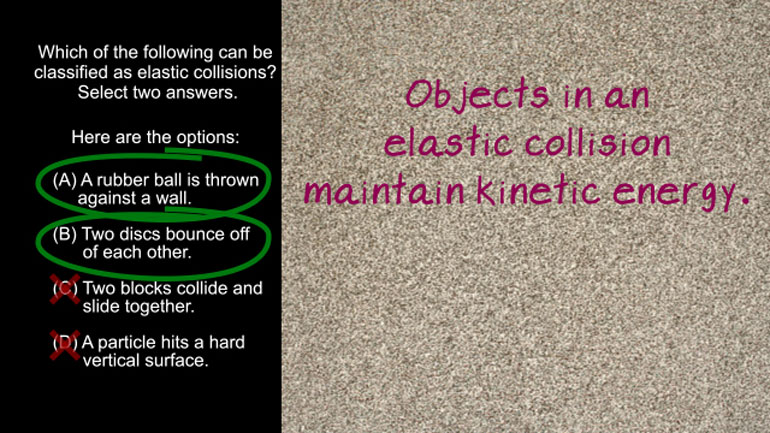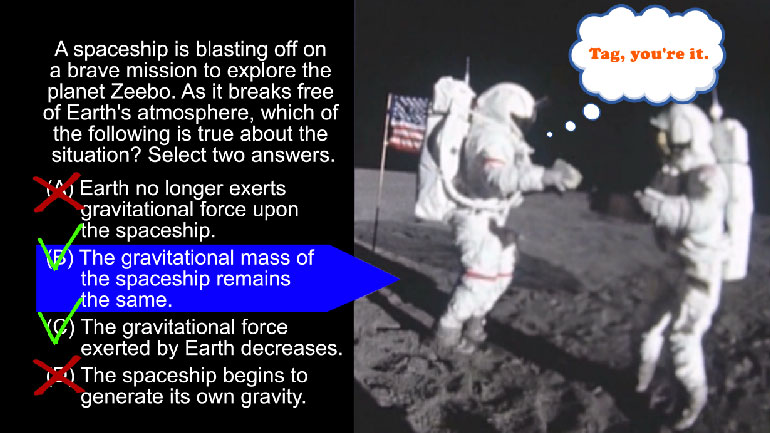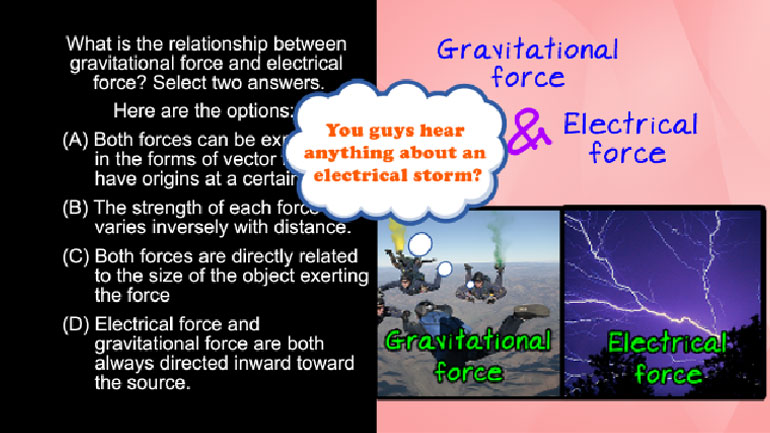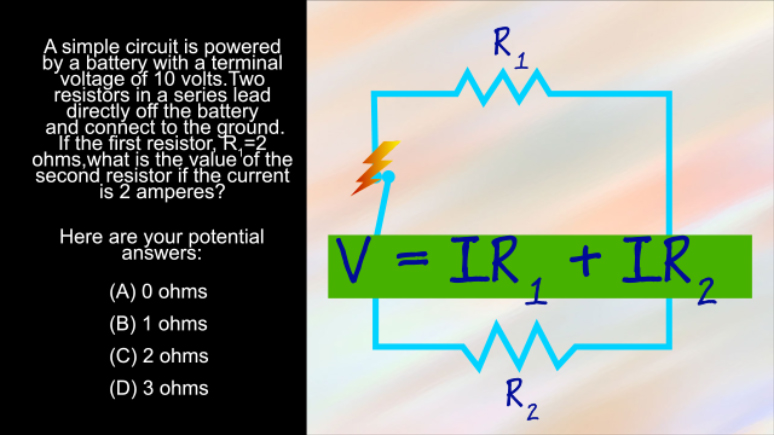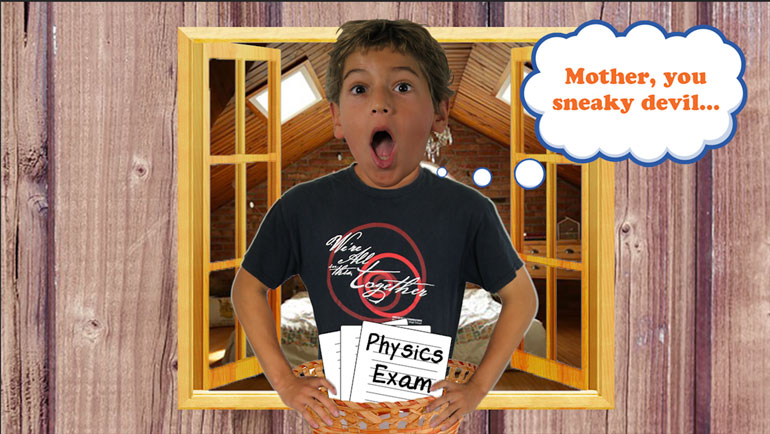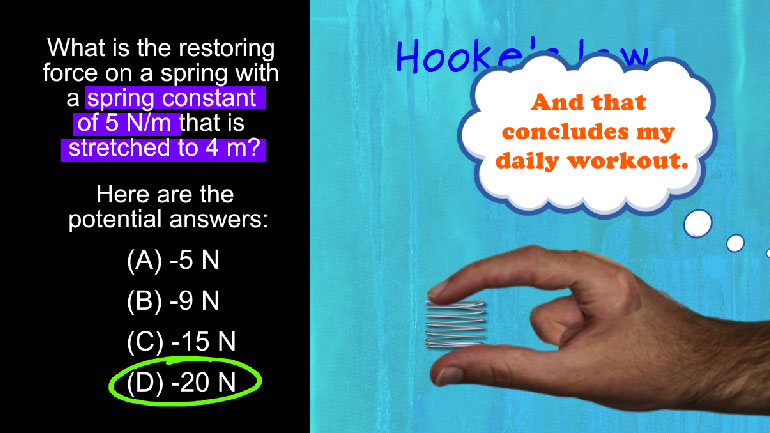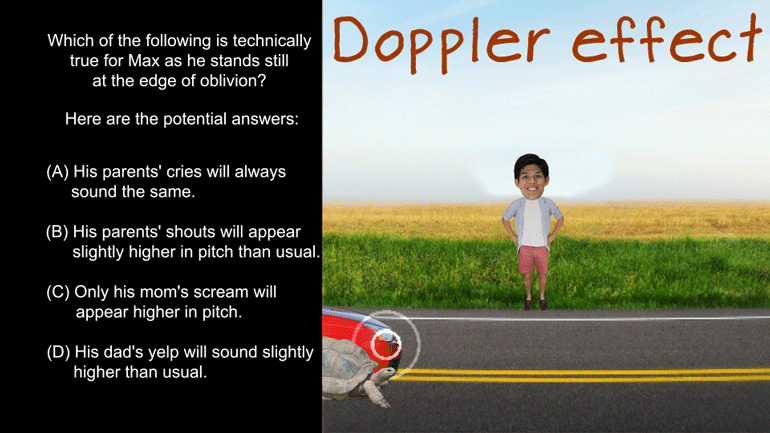ShmoopTube
Where Monty Python meets your 10th grade teacher.
Search Thousands of Shmoop Videos
Working with scientific explanations and theories Videos 9 videos
AP Physics 1: 1.4 Changes and Conservation Laws. Find the current across R2.
AP Physics 1: 1.5 Changes and Conservation Laws. Which of the following can be classified as elastic collisions?
Don't lose your marbles over this AP Physics question. We'll be sure to point you in the right direction.
AP Physics 1: 1.5 Object Interaction and Forces 212 Views
Share It!
Description:
We're not going to force you to answer this question about forces, but we suggest you gravitate towards it anyway.
Transcript
- 00:00
Thank you We sneak and here's your shmoop du jour
- 00:05
brought to you by force The four fundamental forces in
- 00:08
the universe are gravitational force electromagnetic force strong nuclear force
- 00:14
and weak nuclear force There's also the force But well
- 00:18
we're told that's not a real thing despite what we
Full Transcript
- 00:20
believe All right what is the relationship doing Gravitational force
- 00:24
and electrical force Its like to answer than hear the
- 00:28
options Titties baby All right well let's talk for a
- 00:32
second about the relationship between gravitational force in electrical force
- 00:38
Gravitational force an electrical force share some characteristics but they're
- 00:42
not identical There are some very important differences between him
- 00:46
For example gravity is always an attractive force No we
- 00:50
don't mean it always looks good We mean that a
- 00:52
gravitational field always pulls matter inwards It never pushes matter
- 00:56
away But because items with identical charges repel each other
- 01:02
electrical forces aren't always directed in words that we can
- 01:06
rule out Option b also an object size isn't a
- 01:09
factor in determining the strength of either force You know
- 01:13
like a super dense black hole can have a smaller
- 01:15
volume than a huge star So how about electrical force
- 01:18
Well it's also not dependent on an object size so
- 01:22
option c is also incorrect and because the question asked
- 01:25
for two answers and we've eliminated teo while the two
- 01:27
remaining have to be correct right Option b is correct
- 01:30
because each forces stronger the closer we are to the
- 01:33
point of the origin that's Why astronauts in space float
- 01:37
there far away from the earth's gravity upton is correct
- 01:40
because gravitational forces and electrical forces create vector fields that
- 01:44
have a point of origin The sun creates the origin
- 01:47
Of the gravitational field that creates our solar system And
- 01:50
a magnet creates an electromagnetic field that attracts or repels
- 01:54
objects within that field That force also has a point
- 01:57
of origin It usually starts with a creative screenwriter Who's 00:02:00.57 --> [endTime] delusional from lack of sleep
Related Videos
AP Physics 1: 2.5 Changes and Conservation Law. At what point(s) in this situation is energy lost in any form?
AP Physics 1: 1.4 Waves. Which of the following is technically true for Max as he stands at the edge of oblivion?
AP Physics 1: 1.4 Changes and Conservation Laws. Find the current across R2.
AP Physics 1: 2.4 Changes and Conservation Laws. Which of the following circuits should the students use?
AP Physics 1: 1.5 Waves. What can possibly occur when the two waves reach each other?

